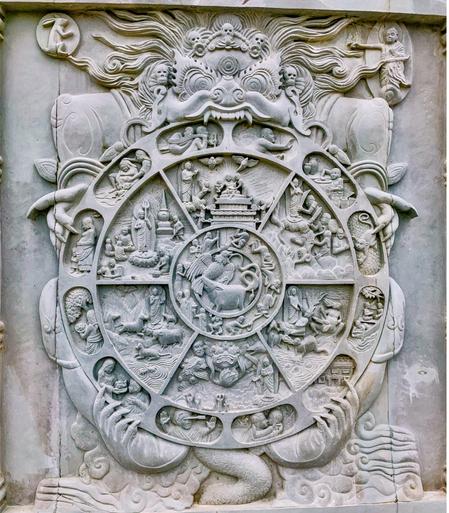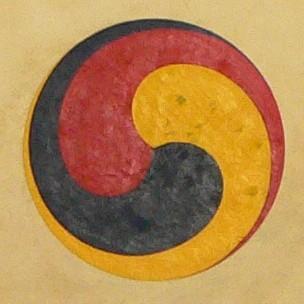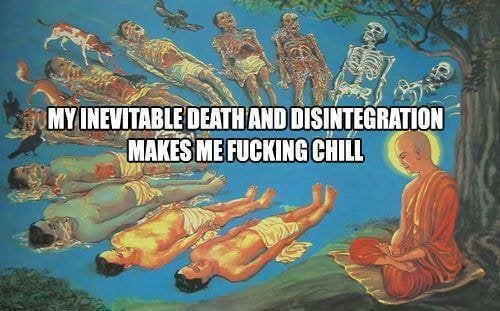Het hart van het boeddhisme klopt in onzekerheid (3)
Een dans in het donker
Stel je voor dat je in een donkere kamer staat. Voor je danst iemand sierlijk rond, maar je ziet hem alleen als je er met een zaklamp op schijnt. Zodra je dat doet, schrikt hij en verandert van richting. Je kunt hem dus alleen volgen door het licht een beetje losjes te laten dwalen. Je ziet nooit precies waar hij is én waar hij heen beweegt. Precies dat is het mysterie van de kwantumwereld: zodra je iets vastlegt, verandert het.
Het onzekerheidsprincipe van Heisenberg laat zien dat je in de natuurkunde nooit tegelijkertijd de exacte plaats én de snelheid van een deeltje kunt kennen. Hoe preciezer je het een probeert te meten, hoe ongrijpbaarder het andere wordt. Dit is geen meetfout. Het is de werkelijkheid. De wereld is geen machine met vaste tandwielen, maar eerder een subtiele dans – veranderlijk, gevoelig voor aandacht, altijd in beweging.
Leven met onzekerheid
Toch proberen we in het dagelijks leven vaak wél die vaste tandwielen te vinden. We plannen, meten en controleren – ons werk, onze emoties, onze lichamen. Alsof het leven pas goed is als het voorspelbaar is. Maar op het meest fundamentele niveau van de werkelijkheid is controle een illusie. De kwantumwereld laat ons zien: het leven laat zich niet vastzetten. Zodra je iets probeert te fixeren, verandert het – zoals de danser in het donker.
Voor het boeddhisme is dit niets nieuws. In de leer van anatta (het niet-zelf) en anicca (vergankelijkheid) klinkt al eeuwenlang dat niets een vaste kern heeft, dat alles in beweging is. Wat we zijn, ontstaat in afhankelijkheid van omstandigheden – net als in de kwantumwereld. In die zin bevestigt de moderne fysica wat oude wijsheidstradities al lang wisten: het leven is geen object, maar een relatie. Geen zekerheid, maar een stroom.
Het grotere geheel
Waarom zouden wij mensen dan denken dat we alles moeten weten, benoemen, vastleggen? Juist het niet-weten is een poort. In de ruimte van onzekerheid ontstaan creativiteit, verbinding en intuïtie. Zoals een kwantumdeeltje pas betekenis krijgt in relatie tot de waarnemer, zo worden ook wij pas werkelijk zichtbaar in relatie tot anderen – en tot het grotere geheel.
We zijn geen losstaande individuen, maar knooppunten van relaties. Zoals Thich Nhat Hanh het noemde: inter-zijn.
De innerlijke verstoring
Wanneer we langdurig stress of trauma ervaren, raken onze hersenhelften uit balans. De linkerhelft – de kant van taal, analyse en controle – neemt het roer over. De rechterhelft – verbonden met gevoel, relaties en het grotere geheel – wordt overstemd. Zo verliezen we het contact met het nu. We proberen dan te navigeren op plannen en schema’s, terwijl ons innerlijk kompas uitgeschakeld is.
Maar juist in dat verlies kan een uitnodiging schuilen. Wat als we, net als in de kwantumwereld, durven leven met onzekerheid – niet als fout, maar als kern? Wat als we het ‘niet-weten’ niet meer vermijden, maar er thuis in raken?
Onzekerheid is geen fout in het systeem.
Onzekerheid is het systeem.
Rob van Boven (1951) is psycholoog en geregistreerd psychotherapeut. Hij was consultant voor verschillende organisaties (drugs en verslaving counseling, vaardigheden workshops) en werkte vijftien jaar als een behandelingscoördinator in een psychiatrische instelling. Bij Rob van Boven wordt het geloof van de overlever bewust gemaakt en een juiste plaats gegeven. Het doel is om los te komen van de dwang van het geloof en bewustzijn te ontwikkelen naast deze denk- en voelpatronen. Hoe meer je van het geloof van de overlever bevrijd bent, zonder het te bestrijden, maar door het de juiste plek te geven, hoe vrijer je kan leven.
Luuk Mur ( 1952) is psycholoog en heeft een drietal boeken geschreven over de door hemzelf ontwikkelde hulpverleningsmethode communitysupport. Hij is lid van de Dzogchen Community Nederland. Dzogchen is een vorm van Tibetaans boeddhisme waarbij veel belang wordt gehecht aan de ontwikkeling van individueel bewustzijn. Bij deze traditie streeft men naar non-dualiteit van het bewustzijn. Mensen zijn zich niet alleen bewust ( je weet dat je dit leest), maar je kunt je ook bewust zijn van dit eerste bewustzijn. Dit meta-bewustzijn wordt ‘gewaarzijn’ genoemd.
Dit is een automatisch geplaatst bericht via ActivityPub.
#anicca #annatta #dansInHetDonker #kwantumwereld #onzekerheid #onzekerheidsprincipeVanHeisenberg #stress #ThichNhatHanh #trauma







